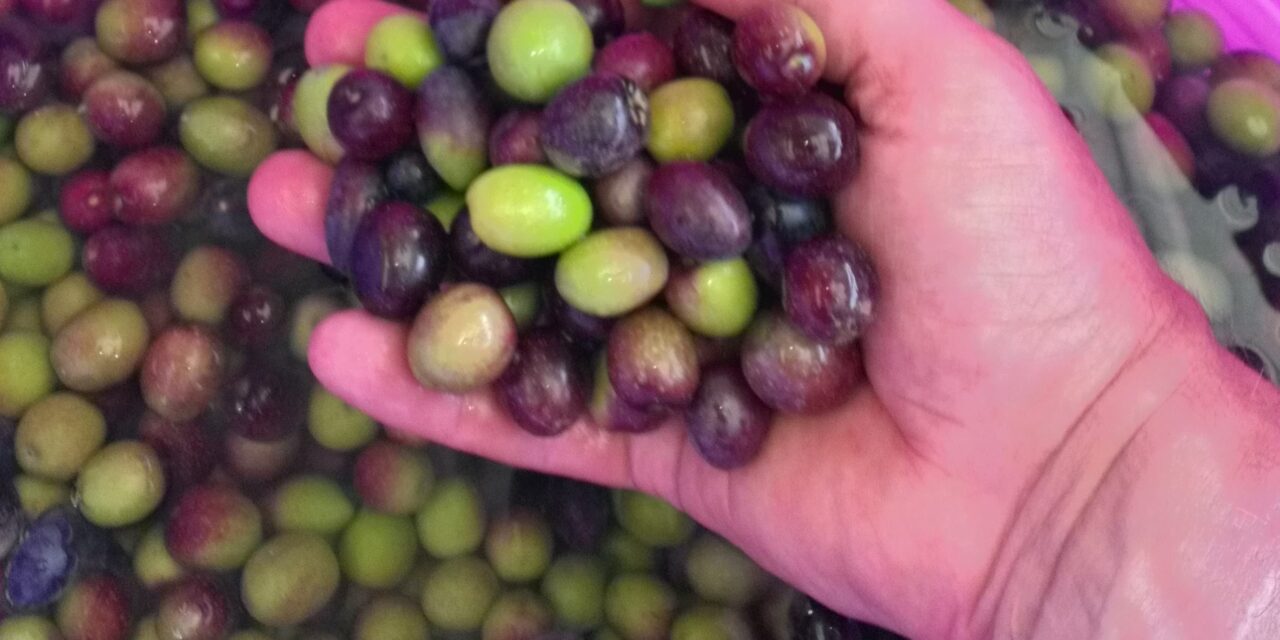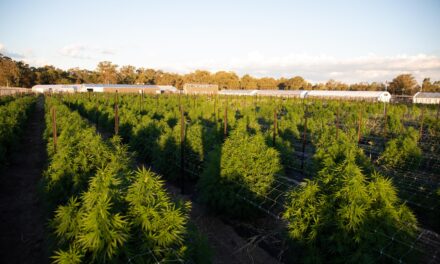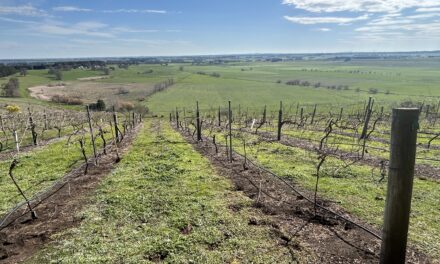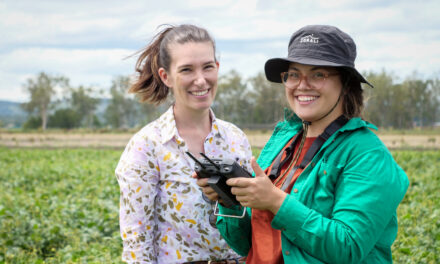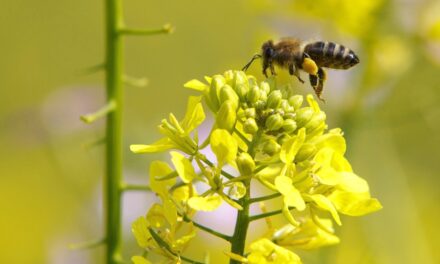At Olive’s Olives, not everything is what it seems. In fact, it’s quite remarkable there’s any olives at all when you realise the whole business was a genuine accident. A throwaway line, a few spare weekends and a shovel not doing very much and hey, presto, one family went from the blissfully ignorant to busy trying to work out what olives were all about. ANDREW MOLE reports.
For a marketing consultant, it must grate just a little with Rob Pearse that his wife Jude would prove to be the one who grasped the key lesson in branding a small business.
Rob had gone to an Australian Olives Association seminar in the very fledgling days of his olive grove and came home with a key message — you need a provenance brand to identify where you are and what you do.
Excellent, he thought.
“We’ll be Macedon Table Olives,” Rob announced with a flourish.
“Rubbish,” Jude opined.
The next morning she put him out of his misery. “We’ll be Olive’s Olives,” she confirmed (with dreams her son Oliver would one day answer the phone to say Olive’s Olives, Oliver speaking).
That never happened, but the name was an immediate sensation and has never slowed down (even though there’s never been an Olive of the female variety within cooee of the business).
It, technically, was in part two of naming a small business, but Rob must have missed that bit at the seminar and Jude was clearly too smart to bother going.
And part two commands the even better name is the memorable one, the one people can recall. Best of all are the ones which people can’t help asking about.
Such as the bleeding obvious: “Who’s Olive?”
Rob concedes it has been a winner, with maybe a little more pizazz than Macedon Table Olives, but it was just the beginning.
“Kyneton is the heart of wine/olives central, so setting up an olive grove was not the strangest thing anyone could do — except me,” he explained.
“Because the next headline in the playbook was ‘ABSOLUTELY NO IDEA!’.
“I spent three weekends digging, carting and replanting about 100 trees from our friend’s place and bingo, we had an olive grove — but still on that previous theme, had absolutely no idea what we actually had.
“Not only did I not know if our trees were for oil or tables, I didn’t even know there was a difference.”
Rob said he found one of those broken plastic tags that come with saplings, with the name of the plant.
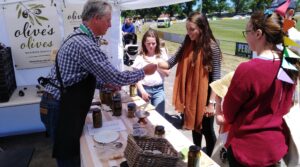
But it was broken and you could only read NAB-T.
So he took it to Kyneton Olive Oil and asked the expert there what it meant, but was told he would need to show the fruit to be sure.
And if his head was spinning before that, it nearly fell off when he discovered there are 50-odd variants and 300 subspecies in olives.
“This whole accident occurred way back in 2008, but 15 years down the track we are producing as much as 1.5 tonnes of olives from our now 300 trees and I have started consulting to, and managing, some nearby absentee landlord enterprises,” Rob said.
“And it’s a little bit of déjà vu all over again as these people have bought land with an olive grove and they have no idea what they are going to do with it — sounds familiar, right?”
After surviving his own first 12 months — and seeing most of his new trees had survived as well — he discovered he was running a lot of Nab Tamri and celebrated the new knowledge by rushing out and buying more table olives and going into the table olive industry.
Rob said their grove was in a rich volcanic plain and the region’s Mediterranean cold winters and hot summers provide an ideal olive growing environment.
“We are on a wonderful journey of continuous education about this remarkable tree and the olives it bears, and we have learnt some harsh lessons along the way.
“Ten years in and we remained a trouble-free enterprise, no black scale, no fungus infections, I was so proud of the grove.
“And then we got apple blight. My olives started looking like jelly beans, I couldn’t work out how it had happened.
“But it turns out, the experts reckon delivery trucks that passed through Harcourt, 20km away and Granny Smith central, then came onto my property, and I then drove a tractor or quad bike over those tracks and into the grove.
“It was a biosecurity smack in the head, and it turned biosecurity from a word to an obsession. I thought I had been so clever not having to spray and plan for these risks because I wasn’t too close to any other olive groves.
“I’d gone overnight from the evolutionary olive grower to the revolutionary and now biosecurity sets the agenda for everything.”
Rob said with no agricultural experience at all (“but lots of passion”) he had gradually learnt how to “nurture and tend these magnificent trees”.
He said from where they started they are now much more knowledgeable about them, helped in a large way by an industry that is so giving and supportive of anyone trying to have a go, and along the way have mastered some of the natural pickling methods of table olive production.
But he said they would always be learning.
“We have several varietals of table olive trees, including Volos, Nab Tamri, Kalamata, Manzanillo, Picual, Azapa, Barouni, Hojiblanco, Coratina and Californian Queen,” Rob said.
“We have local provedores; we do a lot of local farmers’ markets and sell online.
“But mostly we love selling our produce directly to the local community, restaurants and vineyard cellar doors in the Macedon Ranges.
“We take a lot of professional pride in making sure our olives have a ‘natural’ olive taste and texture, unlike supermarket olives.
“This is mainly down to our traditional pickling techniques. Simply put we do not use any chemicals to hasten the process of ‘producing’ our olives, especially our fully ripe natural black olives.
“Our natural ‘Sicilian method’ of pickling means they are in a simple natural brine for at least 12 months, generally more, before being ready for bottling.”
Harvesting in late autumn is predominantly done by hand, with some assistance from hand and mechanical rakes on larger trees as needed.
Each tree’s harvest is weighed so Rob can monitor how the individual trees are performing each season.
Mechanical tree shakers (used for olives grown for oil) are not used. This also ensures their table olives are not bruised.
On the day of harvesting the olives are washed and leaves and stalks removed before being placed in a 10 per cent brine pickling solution.
They remain in this solution for at least 12 months and are inspected and tested for correct brine and pH levels every few months.
During this natural processing the green ripe olives turn a lovely khaki colour while the black (fully ripe) olives have a softer flesh and slightly milder flavour.
“Bottling of our table olives is done by hand,” Rob said.
“When opening a new pickling barrel for bottling we first taste to make sure the olives are fully ‘de-bittered’ and with a lovely balanced olive taste.
“After sterilising the bottles and lids we fill them with olives and then utilise the mature pickling brine as the packing medium. This ensures the wonderful flavours of the pickling process are captured in our bottled olives.”
Out in the field, the other vital part of the year is pruning, which Rob describes as a mixture of art and science.
In which he says the aim is to maximise sunlight and air circulation getting to the olive-bearing branches — and that’s the science.
Trying to foresee how the tree will grow its branches and produce olives in the next one, two and three years is the art — and difficult for the untrained eye.
“Because we ended up with some olive oil varieties from my early ‘no idea’ days we always have a quantity of smaller olives which we thought would be a perfect product for pubs, clubs and restaurants — and we were wrong,” Rob laughed.
“So I thought we might turn them into a tapenade so I made a couple of machines to do that — but none of them worked.
“Then we came up with the idea of a pure olive paste, no other flavours or additives, and it has gone gang busters.
“When the green olives are fully de-bittered we select the smaller ones and utilise them for our Pure Olive Paste.
“We wash them, remove the pits and crush the flesh into a paste. Into sterilised bottles and caps it goes with nothing else, just Pure Olive Paste. We then pasteurise the bottles, then label and they are ready for sale.”
Rob says Olive’s Olives are harvested at two stages of ripeness — green ripe and fully black ripe.
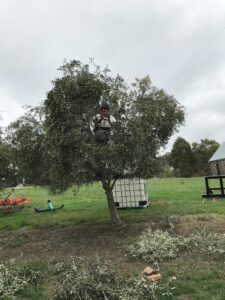
He says there is absolutely no use of harsh chemicals such as lye (caustic soda) to artificially speed up the de-bittering process.
After regular testing and at least 12 months, they are then bottled with the mature brine (filtered three times) used as packing in 210g, 320g bottles and 1kg bulk bags.
“Our green ripe olive harvest happens in mid-autumn when the olives are still green or ‘turning colour’,” Rob said.
“This ‘green ripe’ harvest ensures that when fully de-bittered they are ready to eat. The flesh is firm and there is quite a distinct pleasant umami savoury taste.
“If you love snacking on olives, or enjoying olives with your aperitif, it’s probably because of the umami factor — a mix of sweet, salty and bitter.
“Our black olives are ‘naturally’ black. They are left on the trees for another two to three months after the green ripe stage.
“It is important to be aware this is a natural process and not in any way like the black olives sourced from supermarkets or delis that are ‘processed’ to turn green olives black.”
Rob says there is a huge amount of work involved in doing olives, and getting it right.
And now he knows what olive trees and olives are, he wouldn’t have had it any other way.

